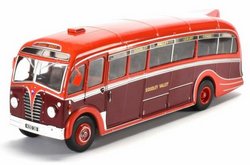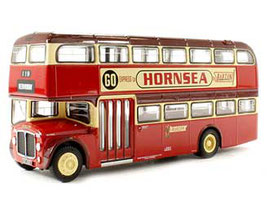
AEC Bus Wiring Diagram


AEC Bus History
The AEC Routemaster Bus Wiring Diagram is above the page.
"AEC" is a UK company that manufactures vehicles, such as passenger buses (including tourist buses) and trucks from 1912 to 1979. The name is an abbreviation from the "Associated Equipment Company", but in its entirety it was practically not used, and the firm was known under the brands "AEC" and "ACLO".
Despite the fact that "AEC" was associated mainly with double-decker buses RouteMaster, made for London, the company was engaged in the supply of commercial vehicles in many countries around the world.
In 1855 the London General Omnibus Company was founded, abbreviated LGOC. Its purpose was to unify and regulate the activities of firms that provided services for the transport of passengers on equestrian omnibuses. In 1909, the company began to produce motor omnibuses for its own use, the first model was the X-type, designed by the project chief engineer Frank Searle. Then followed the B-type of the same designer, considered one of the first commercial commercial vehicles.
In 1912, LGOC went under the control of the Underground Group, which at that time owned most of the London Underground, and made plans for trams. As part of the reorganization after the merger, a separate concern for the manufacture of components for buses, which was named "Associated Equipment Company", was created.
The first minibus "AEC" was created on the basis of the chassis of the X-type. With the outbreak of the First World War in 1914, AEC's ability to produce a large number of vehicles with a conveyor belt played an important role in providing supplies for the growing demands for army trucks. In 1916, AEC launched a large-scale production of a 3-ton Y-type truck, which continued after the war. Since then, the company has become associated not only with buses, but also with trucks.
In 1926, AEC and Daimler created the Associated Daimler Company (ADC), which was closed two years later. In 1927, AEC moved production from Walthamstow to a new plant in Southall, London.
In 1928, the chief engineer and designer of the company was appointed G.J. Rakhem, who previously worked for Leyland Motors. His ideas have made a significant contribution to the reputation of "AEC" as a manufacturer of reliable and high-quality cars.
Since 1929, "AEC" has released many new models of cars. Truck names began with M (Majestic, Mammoth, Mercury, etc.), and the names of the buses with R (Regent, Regal, Renown, etc.). They continued to be produced until the end of World War II. "AEC" introduced the use of diesel engines in the entire range of its products in the mid-1930s.
From 1931 to 1938, AEC and English Electric jointly produced trolleybuses. "AEC" provided the chassis, and "English Electric" was engaged in the installation of electric motors and controls.
In 1932, AEC acquired a controlling interest in the British subsidiary of the American firm FWD and began to use many of its standard components in the production of its vehicles. To avoid confusion, they went on sale under the brand name "Hardy". Production was discontinued in 1936.
The civilian production was stopped in 1941, and AEC moved to manufacture vehicles for the needs of the front until 1944. During the war, the company prepared 10-ton 4X4 artillery tractors Matador (adapting its 4X2 Matador trucks for this purpose, for which it was useful experience with all-wheel drive Hardy). Version 6X6 was named "Marshall" in "AEC", but it was also called Matador. To produce these models in 1941, AEC Armored Car was formed.
In 1946, AEC and Leyland Motors form British United Traction Ltd (BUT) as a joint venture for the production of trolleybuses and traction equipment for diesel trains, as the postwar reduction in demand did not require all the capacities of both firms. In the same year, AEC resumed the production of civilian products, starting with 0661/20 Regent II and 0662/20 Regal I. These were not new models, but the use of the major developments of 1939. For single-decker buses, the name Regal II was used, while someone in Southall did not remember the light model of 1936 with the same name. After that, the name was changed. At the end of 1946, the post-war 0961 RT was also put into production, and in 1948 the firm began to produce Mammoth Major, Matador and Monarch MK III, and then Regent III and Regal III, destined for the provinces. In addition, in 1948, AEC acquired Crossley Motors and Maudslay Motors Company, and from October 1 founded Associated Commercial Vehicles Ltd as a holding company for newly acquired companies and its own production. Despite the change of name, the initials of "AEC" remained on the produced cars - with the exception of some models, for example, the buses Crossley Regent. In 1949, ACV purchased the bus body company Park Royal Vehicles, along with its subsidiary Charles H. Roe. This firm developed a new cabin for AEC Mercury in the mid-1950s, which after a while appeared on all models.
In 1961, ACV bought up Transport Equipment (Thornycroft). The name "Thornycroft" disappeared from all vehicles, except for specialized emergency vehicles for airports, such as "Nubian" and "Mighty", an off-road tractor.
In the 1960s, the AEC engines were used in Finnish trucks Vanaja.
In 1962, ACV acquired Leyland Motors Ltd. AEC trucks received the bodies of Ergomatic, used in several brands of Leyland, including the Albion. In 1968, production of double-decker buses "AEC" was discontinued, and the latest models of tourist buses and trucks were issued in 1979. The name "AEC" actually disappeared from commercial vehicles in 1977, but "Leyland Maraphon" was produced at the Southall plant, while the British Leyland parent company did not close it in 1979.
